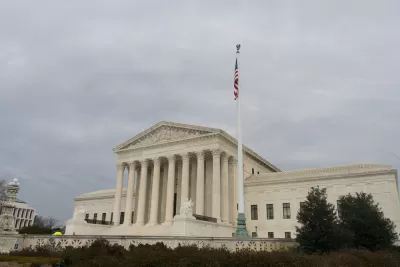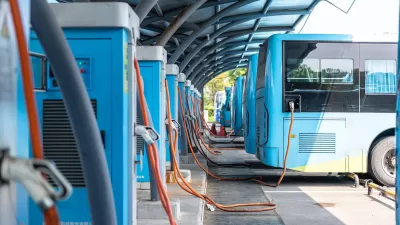If rectifying racial injustice no longer passes constitutional muster, what chance does the environmental justice movement have?

The U.S. Supreme Court’s ruling in Students for Fair Admissions, Inc. vs. President and Fellows of Harvard College rightfully made news when announced in June 2023 for its expected impact on affirmative action programs in college admissions.
Another potential consequence of the decision, according to an article by Alex Brown in the New Jersey Monitor, could be on the ability of environmental regulators to monitor and mitigate pollution in minority and low-income neighborhoods, a key tool of environmental justice efforts.
Emily Hammond, an environmental law expert and professor at the George Washington University Law School, is quoted in the article describing the conundrum: “The [Supreme Court] majority really reinforced the idea that a generalized government policy of rectifying past discrimination would not pass constitutional muster.”
Lawmakers around the country are scrambling to figure out how to respond. Many expect state laws to face lawsuits as a result of the precedent now set by the U.S. Supreme Court. Examples of laws potentially at risk include a law approved in Minnesota in 2023 that “forces regulators to consider cumulative pollution effects before issuing air quality permits in certain areas, including tracts with 40% or more nonwhite residents,” according to Brown.
The consequences could also reach the federal level. “The Biden administration established a ‘race-neutral’ screening methodology known as the Climate and Economic Justice Screening Tool to guide its efforts to direct 40% of federal spending across many agencies to disadvantaged communities,” according to Brown.
FULL STORY: It may have just gotten harder to protect minority communities from pollution

Planetizen Federal Action Tracker
A weekly monitor of how Trump’s orders and actions are impacting planners and planning in America.

Congressman Proposes Bill to Rename DC Metro “Trump Train”
The Make Autorail Great Again Act would withhold federal funding to the system until the Washington Metropolitan Area Transit Authority (WMATA), rebrands as the Washington Metropolitan Authority for Greater Access (WMAGA).

The Simple Legislative Tool Transforming Vacant Downtowns
In California, Michigan and Georgia, an easy win is bringing dollars — and delight — back to city centers.

The States Losing Rural Delivery Rooms at an Alarming Pace
In some states, as few as 9% of rural hospitals still deliver babies. As a result, rising pre-term births, no adequate pre-term care and "harrowing" close calls are a growing reality.

The Small South Asian Republic Going all in on EVs
Thanks to one simple policy change less than five years ago, 65% of new cars in this Himalayan country are now electric.

DC Backpedals on Bike Lane Protection, Swaps Barriers for Paint
Citing aesthetic concerns, the city is removing the concrete barriers and flexposts that once separated Arizona Avenue cyclists from motor vehicles.
Urban Design for Planners 1: Software Tools
This six-course series explores essential urban design concepts using open source software and equips planners with the tools they need to participate fully in the urban design process.
Planning for Universal Design
Learn the tools for implementing Universal Design in planning regulations.
Smith Gee Studio
City of Charlotte
City of Camden Redevelopment Agency
City of Astoria
Transportation Research & Education Center (TREC) at Portland State University
US High Speed Rail Association
City of Camden Redevelopment Agency
Municipality of Princeton (NJ)





























